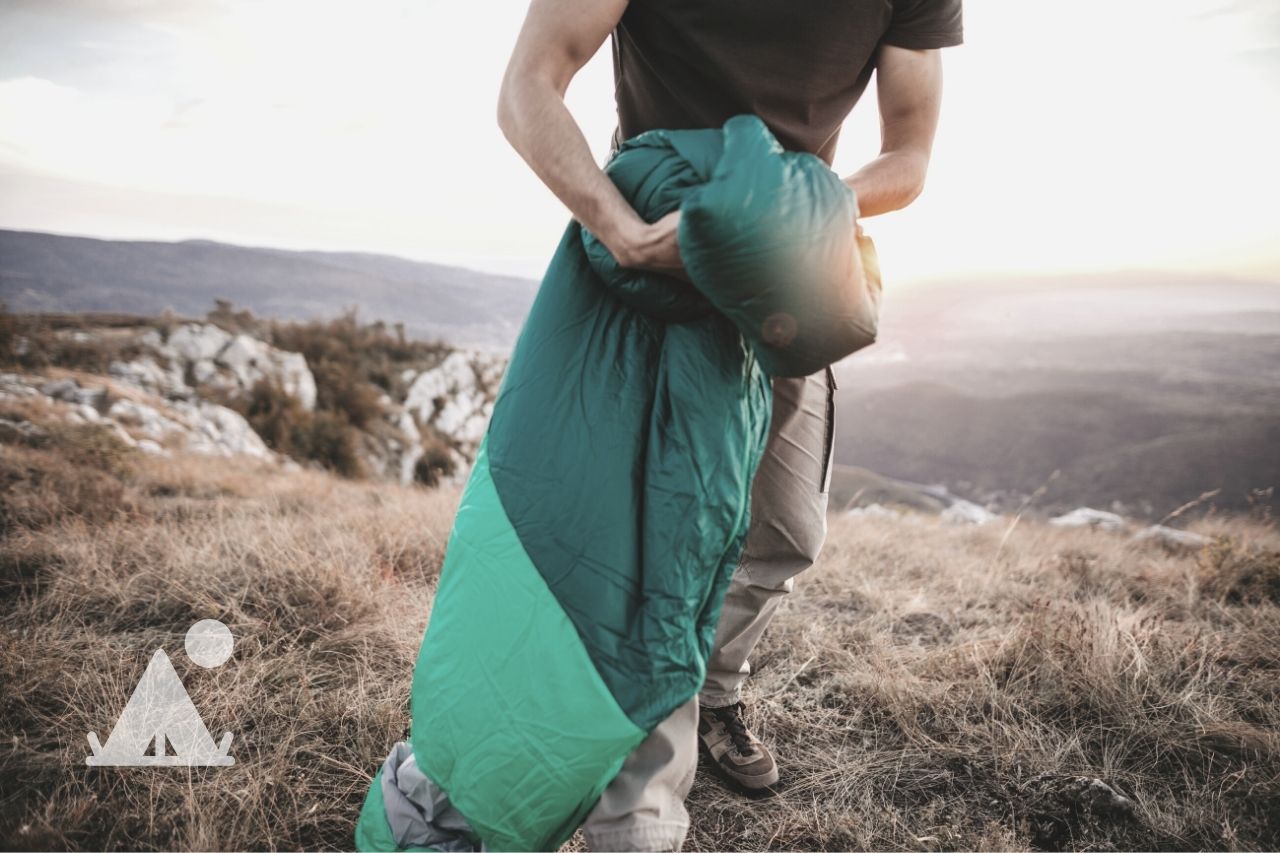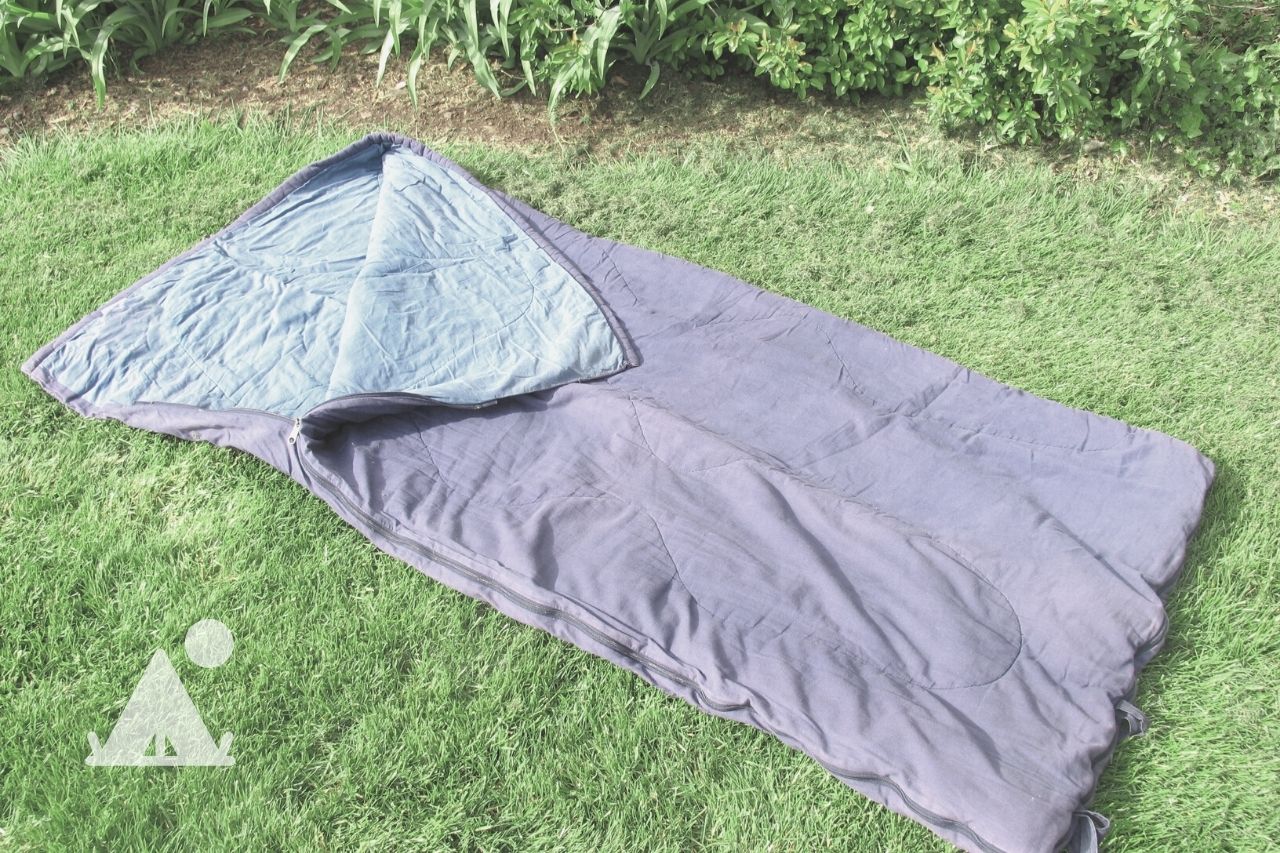The biggest risk when washing a sleeping bag is damaging the synthetic or down insulation. In this guide, we give you tips on how to wash your sleeping bag without ruining it.
The biggest dangers to look out for when cleaning your sleeping bag are heat, harsh detergents, and aggressive handling.
Do You Need To Wash Your Sleeping Bag?

Just because it doesn’t appear or smell dirty, it doesn’t mean that you don’t need to clean your sleeping bag.
For one, there’s lots of dirt you may not see. Body oils, dead skin cells, hair, dust mites, pollen and other particles from the outdoors will stick onto your sleeping bag over time.
They’ll also settle inside the insulation, making the sleeping bag unhygienic. If you are sensitive to allergens, a dirty sleeping bag can cause uncomfortable nights.
Dirt can also affect the performance of your sleeping bag. According to REI, one of the biggest outdoor retailers, dirt, sweat and body oils can reduce your sleeping bag’s insulating power.
So, yes, you need to wash your sleeping bag.
How Often Should You Wash Your Sleeping Bag?
Do not wash your sleeping bag too often as that could damage the fabric and insulation.
How often is too often?
Washing the sleeping bag monthly is too often. Washing after each camping trip is still too much, especially if you go camping often.
Here’s when to wash your sleeping bag.
- For most campers, one wash per year is all you need to keep your sleeping bag clean. Time your wash at the end of camping season.
- If you go on a lot of camping trips, you can wash it two or three times a year. Alternatively, switch between two sleeping bags and wash each just once a year.
- This is optional, but some people like to wash their new sleeping bag before using it. This gets rid of any leftover dyes and chemicals from the factory. It also removes any germs or dirt the sleeping bag may have picked up in the store or warehouse.
- Wash your sleeping bag any time it looks and feels really dirty or smelly.
If only a couple of areas of the sleeping bag are dirty or stained, spot clean it instead. We have some tips on how to do that further below.
How To Keep Your Sleeping Bag Cleaner For Longer
Here are a few ways to keep your favorite sleeping bag clean for longer so that you don’t need to wash it too often.
- Get a sleeping bag liner. It makes the sleeping bag warmer and provides a protective barrier against dirt. You can wash the liner as often as you want.
- Do not place the sleeping bag directly on the ground. Use a mat, pad or some other barrier.
- Spot clean any small stains and dirty spots.
- Air the sleeping bag daily when camping and after the camping trip to get rid of any trapped moisture. If the sleeping bag is wet, air it for several hours to prevent mold and mildew from growing.
How To Machine Wash A Sleeping Bag Without Ruining It?
It is safe to clean your sleeping bag in a washing machine, as long as you do it the right way. Below are some helpful pointers.
If you want a quick summary, here’s a how-to video from REI.
1. Use front loading or high efficiency washer
Only use a front loader washing machine. The reason for this is that top loading washers have agitators that are too aggressive on clothes. The agitator can damage your sleeping bag.
The tumbling drum of a front loader is gentler on the sleeping bag.
That said, if you have a high efficiency washer (no agitator), you can wash your sleeping bag in it.
2. Use a high-capacity washer
Even if your sleeping bag can fit in a small washing machine, it may not have enough room to tumble around and get clean.
For the most thorough wash, you’ll want to use an oversized washer (at least 10kg in capacity). If you don’t have one at home, a laundromat is the next best option.
3. Get the right detergent
Regular washing machine detergent is too harsh for your sleeping bag and could damage it.
If you have a down sleeping bag, you need to be especially careful as the down insulation is delicate. We recommend getting a down-specific detergent like Grangers Down Wash.
If you have a synthetic sleeping bag, get a mild detergent to avoid damaging the polyester fibers.
Do not use bleach for any type of sleeping bag.
4. Select the right cycle and water temperature
Prepare the sleeping bag for cleaning by unzipping it and loosening any ties.
Put it in the washing machine then select the cycle recommended on the care label of the sleeping bag. For most sleeping bags, the recommended cycle is gentle/delicate with cold or warm water.
Rinse the sleeping bag twice to get rid of all detergent from the fibers.
How To Dry a Sleeping Bag?

It is safe to dry a sleeping bag in a dryer. But you need to take some precautions.
- Similar to washing, select the largest dryer you can get. This will give the sleeping bag room to tumble and dry. A small dryer can cause clumping and leave some parts wet.
- Set the heat to low. It’s better if the sleeping takes longer to dry instead of using too much heat to dry it quickly. If the dryer is too hot, it could damage the insulation.
- Place a couple of tennis or dryer balls inside the dryer to help break up clumps and fluff up the sleeping bag.
- After drying, spread the sleeping bag on a clean surface like a sofa to make sure any remaining moisture is gone.
Now you can go ahead and store the sleeping bag.
How To Hand Wash a Sleeping Bag?
If you don’t have access to a large washing machine, you can hand wash your sleeping bag. The best place to do it is in a bathtub.
- Fill the bathtub with cold water and add the right hand washing detergent. For a synthetic sleeping bag, use mild detergent. For a down sleeping bag, use a down-specific detergent.
- If the sleeping bag is very dirty, let it soak in the detergent for an hour.
- Rub and knead the sleeping bag with your hands to get soap through it. Even better, gently step on the bag with your clean feet.
- Drain the tub and refill it. Knead the sleeping bag to remove detergent in the fibers.
- Drain the tub again and refill with clean water and keep rinsing the sleeping bag until the water is clear. You may need to rinse it several times to get rid of all detergent.
The next step is drying the sleeping bag. Lift it out of the water and gently press excess water out.
Make sure you lift it as one. Letting some parts of the sleeping bag hang could cause tears and rips because of how heavy the filling gets.
If you have a dryer, follow the drying steps above.
If not, lay it outside on a clean surface away from direct sunlight. It can take up to a day or more for the sleeping bag to dry, especially if it is a down sleeping bag.
If it’s not dry at the end of the day, spread it on the couch and air it outside again the next day until it is completely dry.
How To Spot Clean A Sleeping Bag?
Sometimes, spot cleaning all your sleeping bag needs instead of a full wash. In other cases, you may need to spot clean some stains before throwing it in the washer.
Whatever the reason, here’s how to safely spot clean a sleeping bag.
- Spread out the sleeping bag and identify the area or areas you need to spot clean.
- Apply the same detergent you would use in the washer on the dirty or stained area. Then dip a sponge, soft cloth or soft bristled toothbrush in warm water and gently scrub away at the dirty spot.
- When the stain is gone, dip a sponge or cloth in clean water and dab at the spot to remove detergent. You can also try rinsing the spot under running water by holding the fabric away from the insulation.
- Leave the sleeping bag spread out to dry.
Should You Dry Clean A Sleeping Bag?
According to Coleman, one of the most popular sleeping bag brands, you should never dry clean a sleeping bag.
Whether your sleeping bag has down or synthetic fill, the harsh chemicals used in dry cleaning will damage it.